
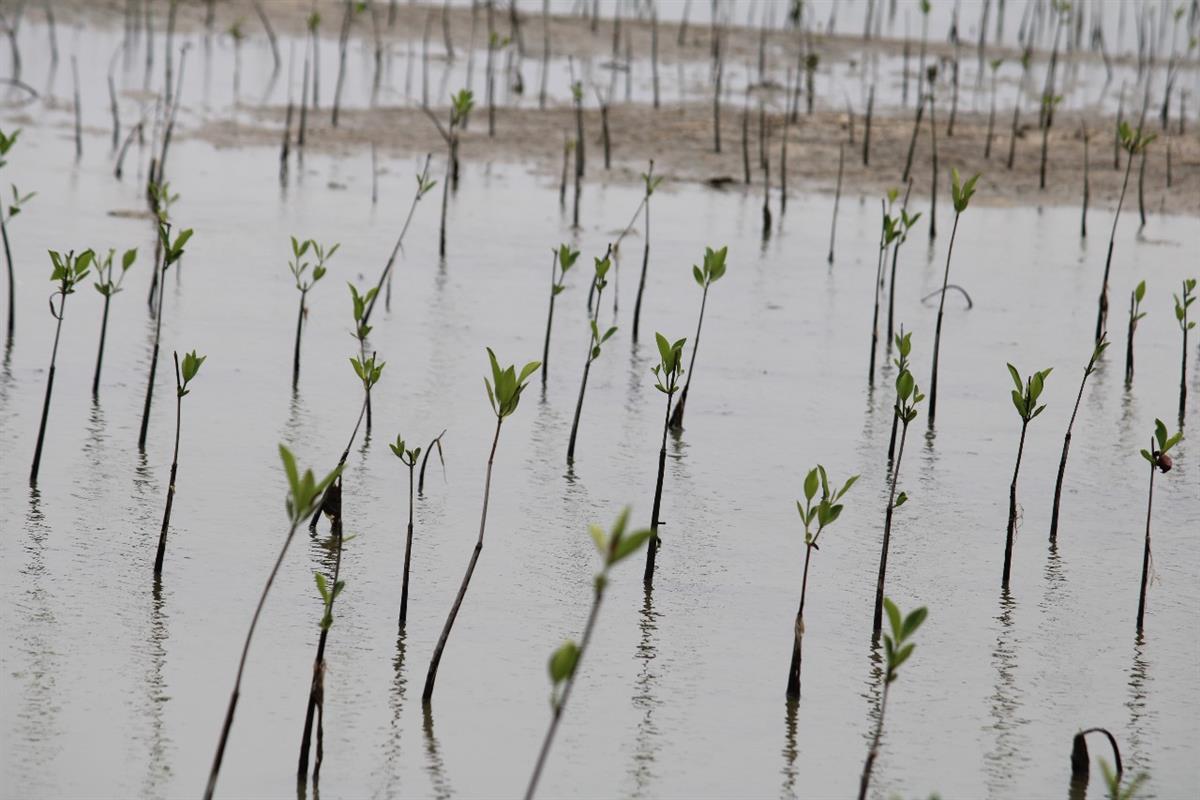
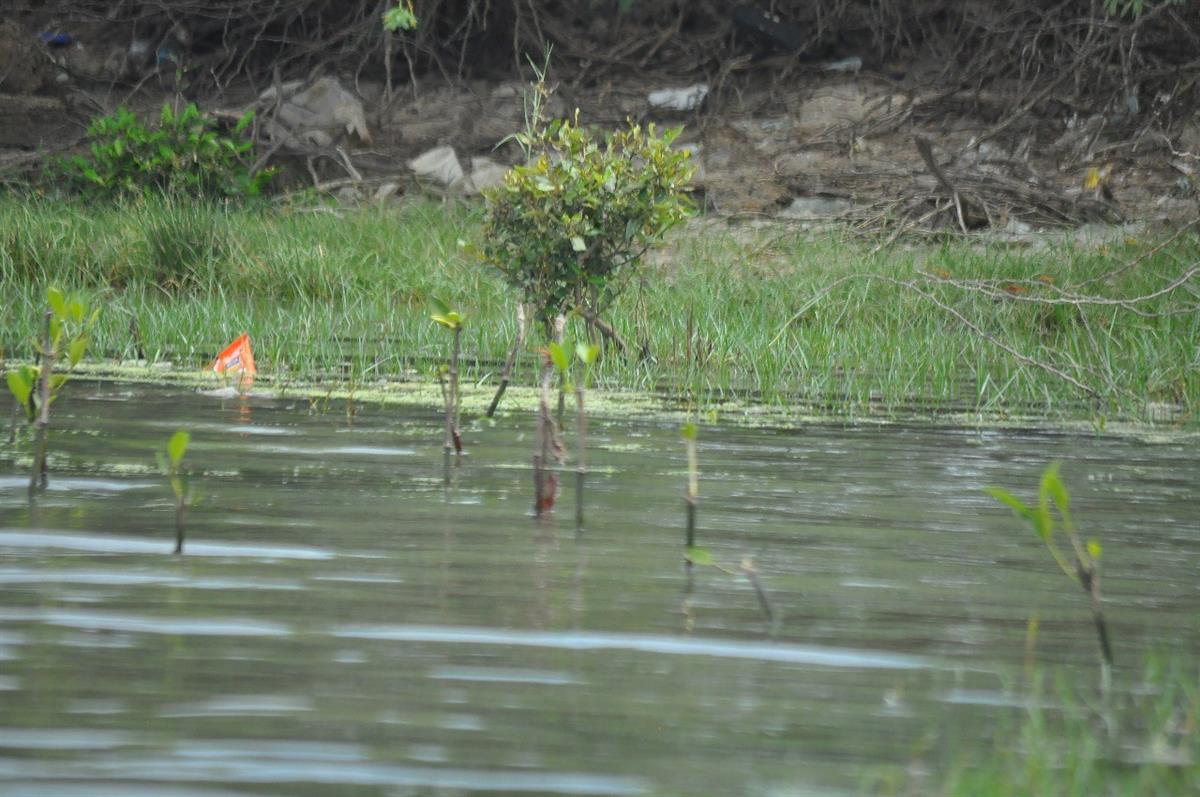
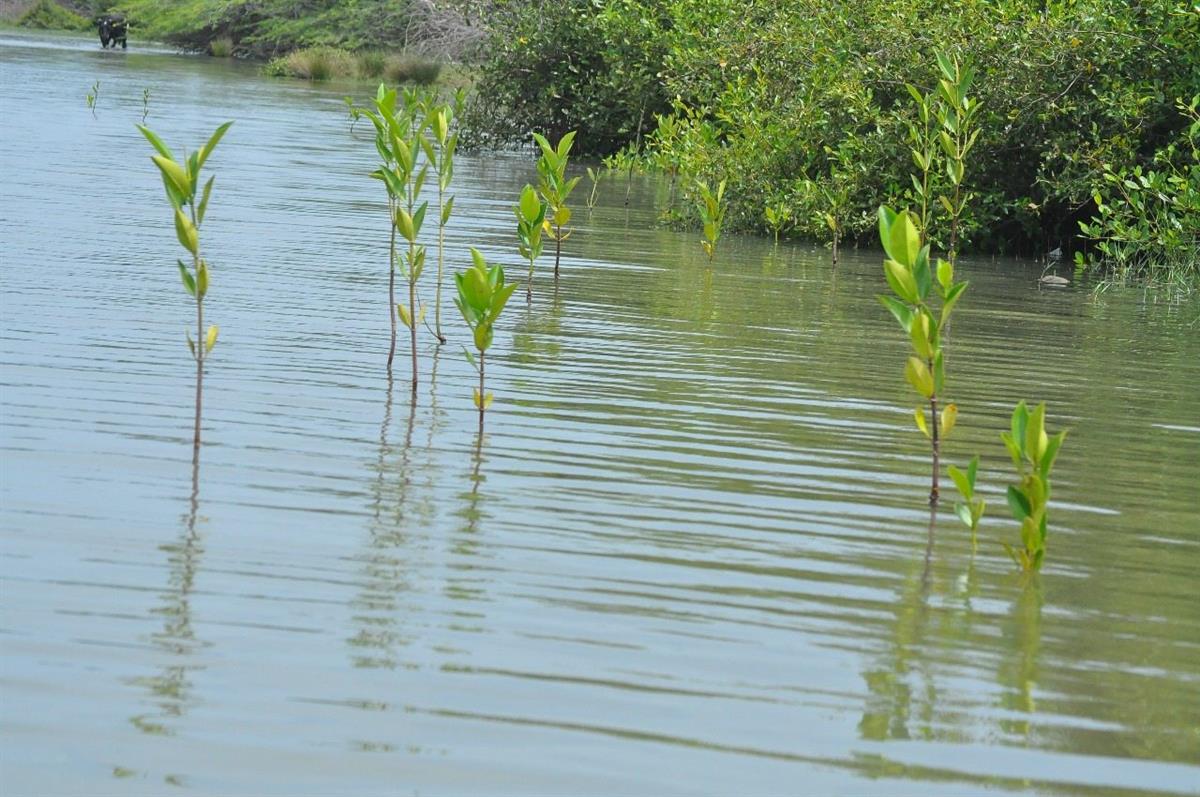
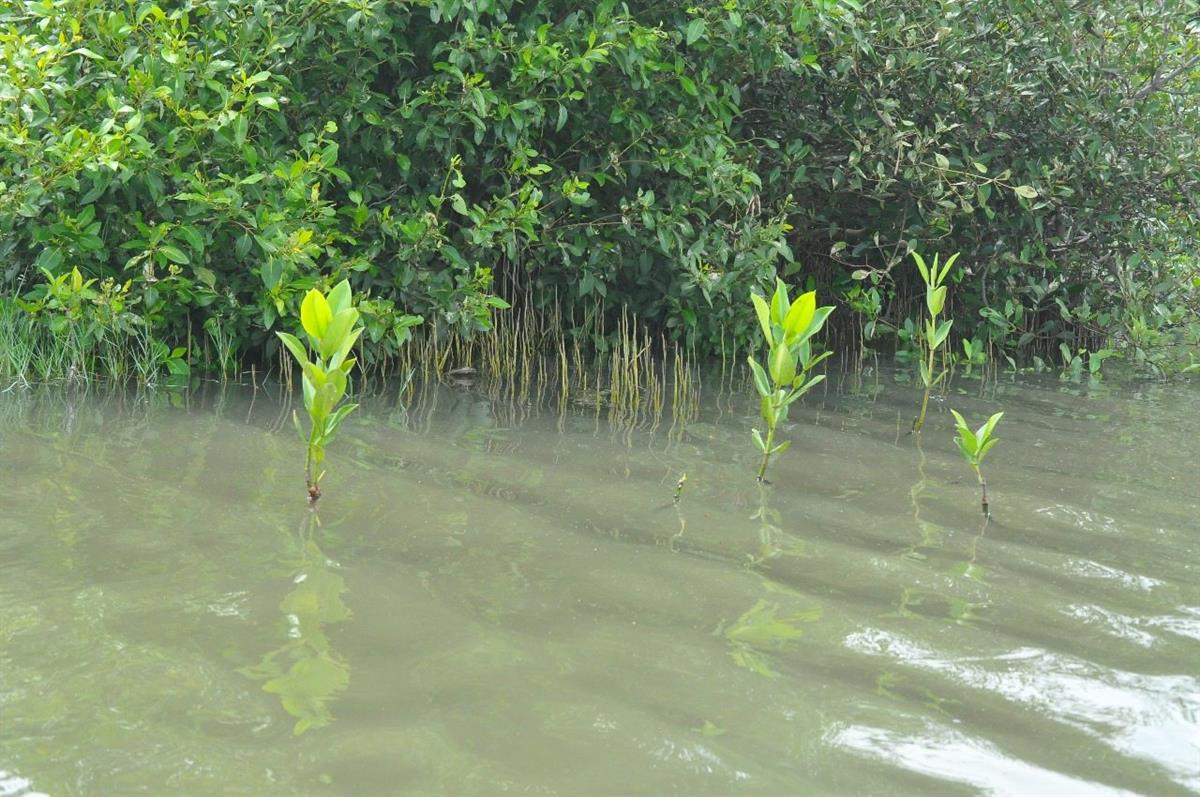
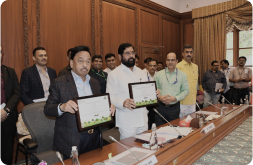
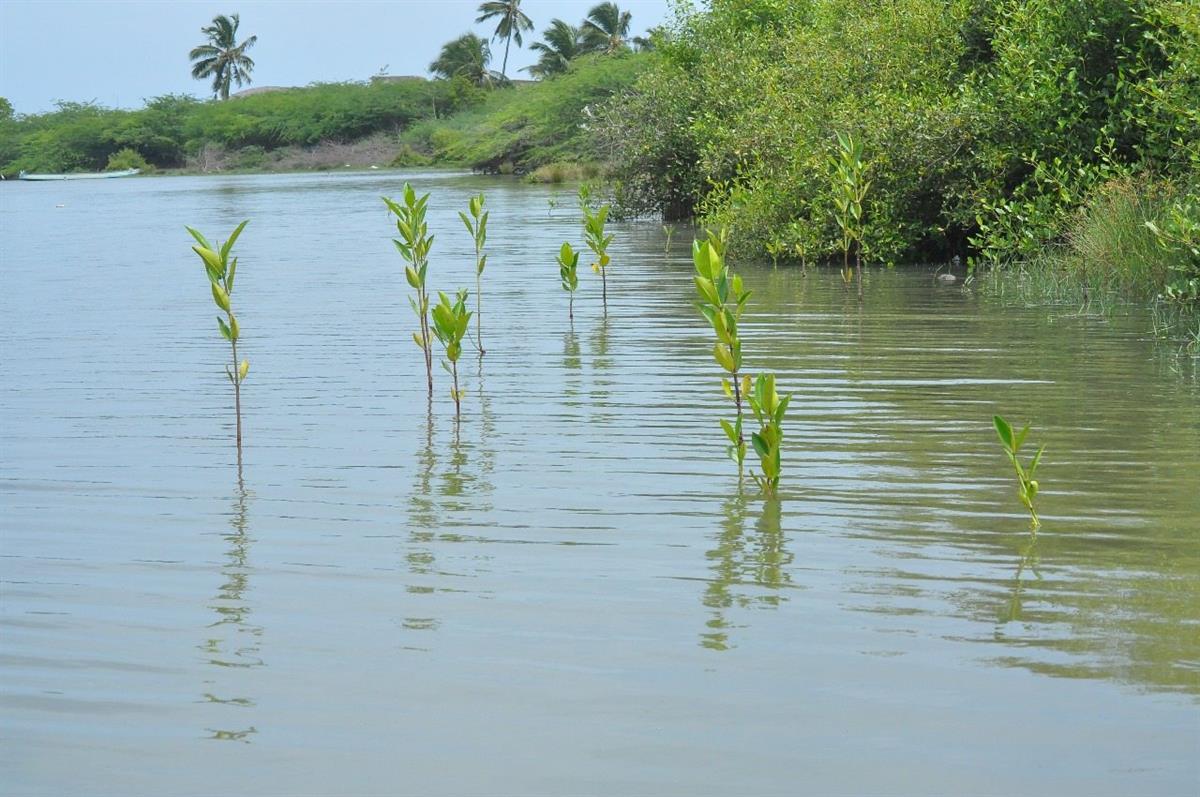
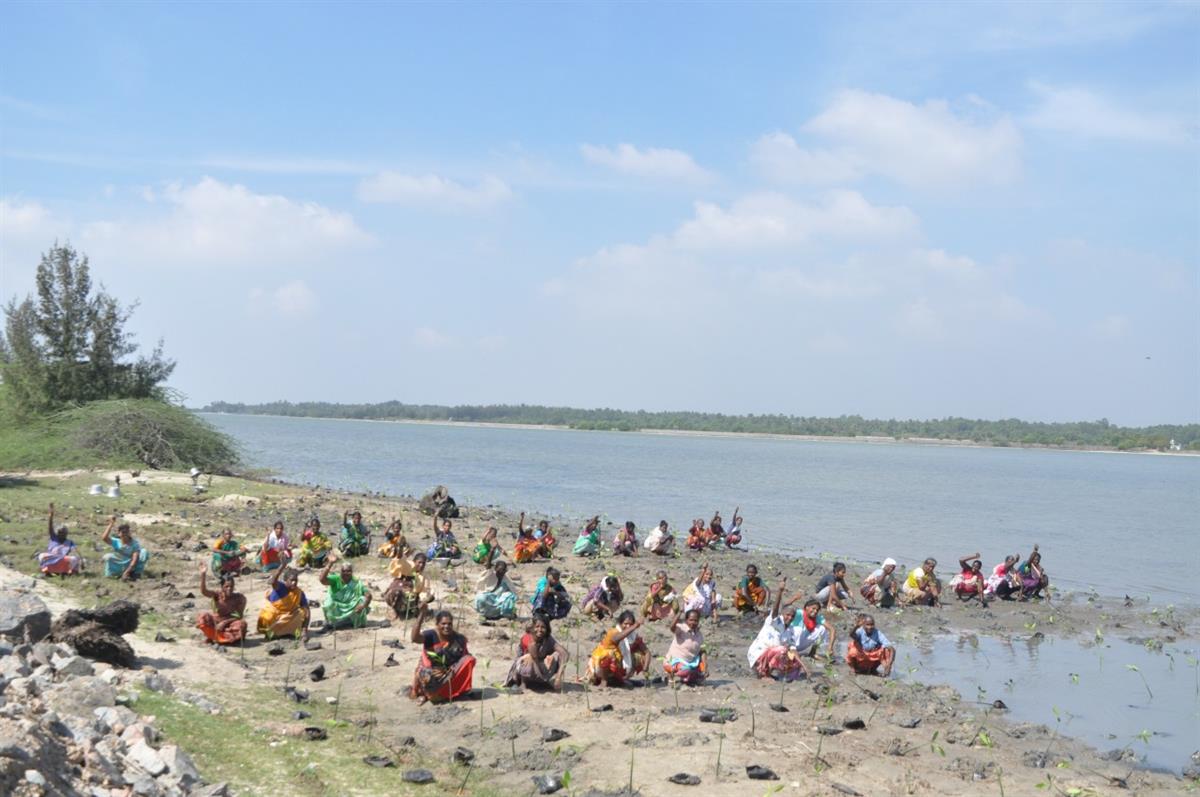
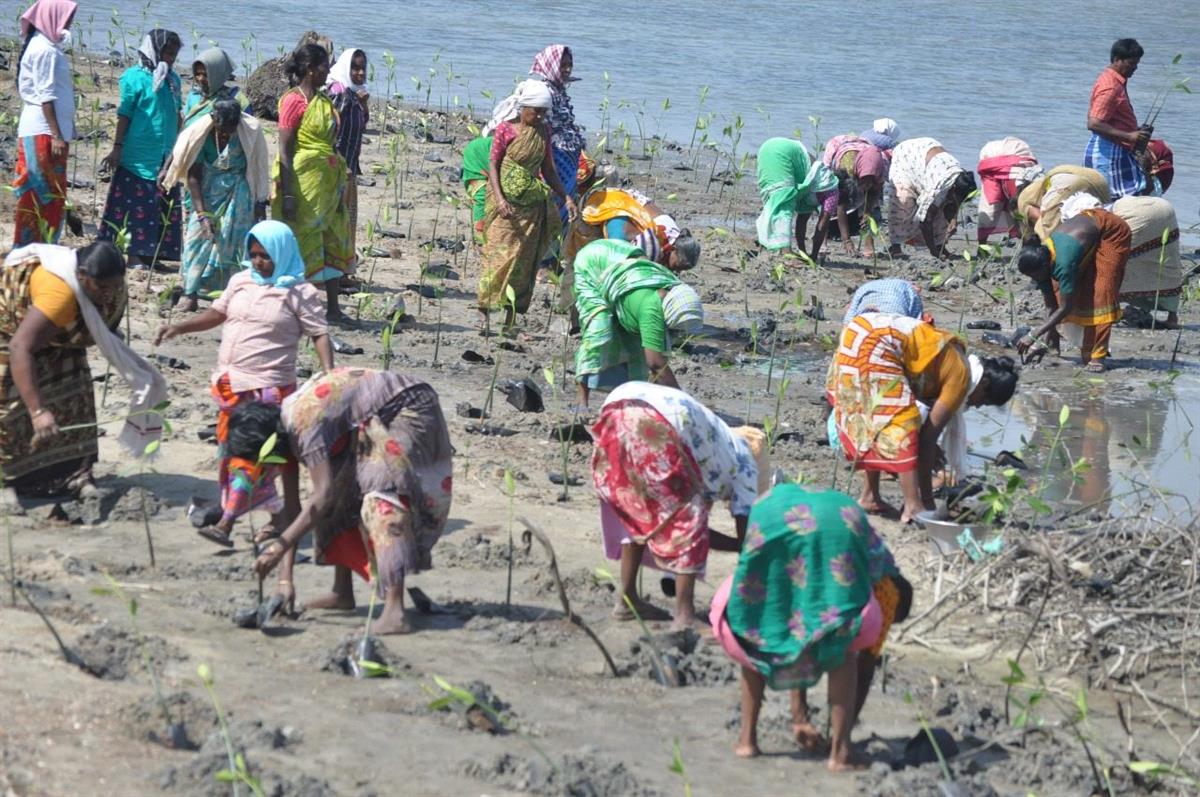
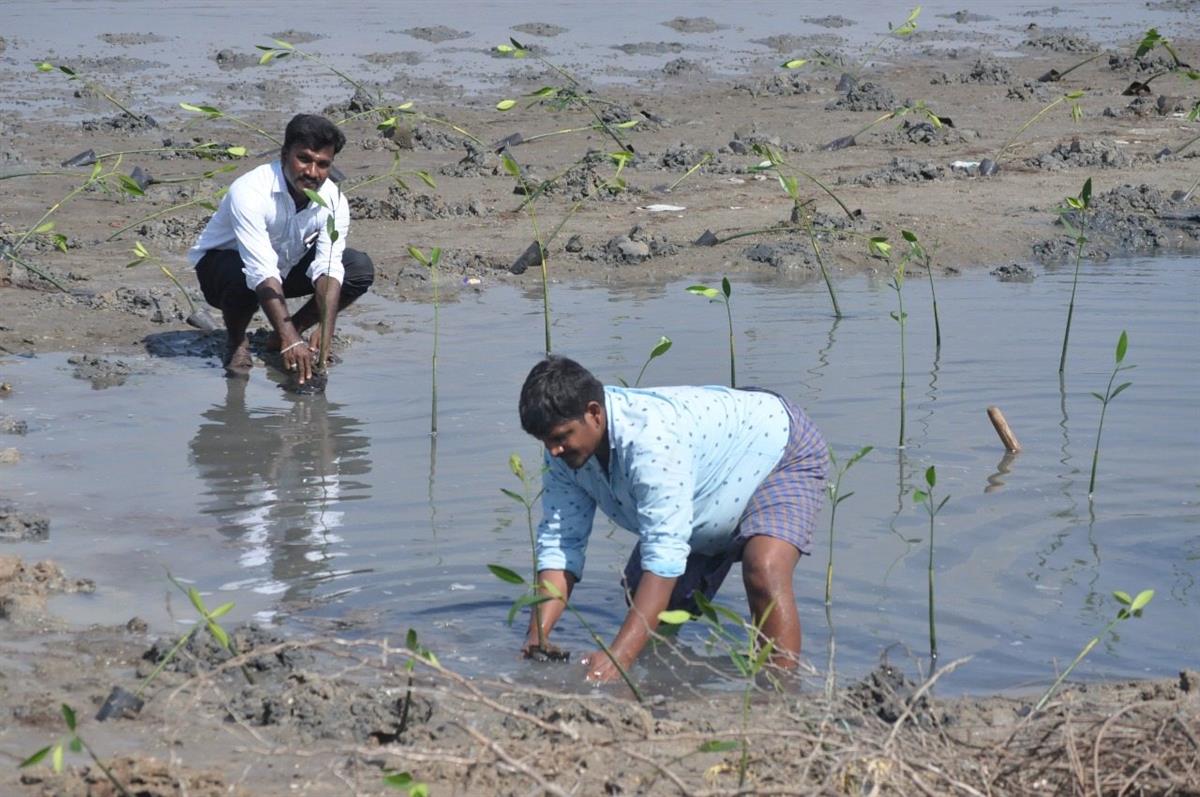

Project Target
0% Remaining
50,000
Trees Planted out of 50,000 Trees

Project Location:
The plantation project was implemented in Marakanam, Thalankaadu and Muttukaadu villages located in the Villupuram district of Tamil Nadu.
Project Aim
About the Project
Planting mangroves in Kazhuveli wetlands, the second largest brackish water lake in South India Villupuram district, Tamil Nadu, is an initiative aimed at promoting sustainable livelihoods for the coastal communities. Historically, Kazhuveli was a thriving mangrove forest but has since been degraded due to human activities, particularly the establishment of salt pans and overfishing. As a result, the wetland’s ecosystem has been severely impacted. Kazhuveli is recognized as a prioritized wetland in Tamil Nadu and is one of the 94 identified wetlands under the National Wetland Conservation and Management Program, which is operationalized by the Government of India. The implementation of this mangrove planting project holds significant importance in the sustainable management, conservation, and development of these vital ecosystems. By promoting the growth of mangroves, the initiative aims to address the impacts of climate change on coastal and marine environments and support their restoration. This effort is crucial in ensuring the long-term viability of these ecosystems and the communities that rely on them. They serve as an important source of income for fishing communities, as well as provide a habitat for a variety of species that are harvested for food and other resources. Additionally, mangrove trees offer a variety of benefits, such as medicine, tannins, fuel and wood for construction of boats, houses, making them an important part of the local ecosystem and strengthening the economy. Mangrove habitats are home to a diverse faunal species that includes birds, reptiles, coastal aquatic species, mammals. Such enriched ecosystem has a potential for sustainable tourism which can be an additional source of livelihood for coastal communities.
In an effort to address the vulnerability of the area, restoring the mangroves along the coastal ecosystem promises to be a worthy solution to the challenges faced by the area.
Mangroves are often overlooked but are extremely crucial to the coastal ecosystems they inhabit. These unique ecosystems act as a buffer between marine and terrestrial communities and protect shorelines from damaging winds, waves, and floods. In addition to restoring the ecosystem and strengthening the biodiversity of the area, mangroves are crucial in the fight against climate change. It is known for its ability to absorb three to four times more carbon than regular trees. A healthy mangrove plantation can also go a long way in supporting the needs of the local communities.
Why Trees for this Project?
In an article in Mongabay, P. Ragavan of Council of Scientific and Industrial Research (CSIR), National Botanical Research Institute, Lucknow highlighted the importance of mangroves. He says, “Mangroves prevent coastal erosion by reducing the height and energy of wind and swell waves passing through them and minimize the impact of natural hazards such as typhoons, cyclones, hurricanes, and tsunamis, helping to shelter lives and assets of coastal communities.”
Another article in Mongabay points out why mangroves deserve our attention and protection. It says, “Although they’re only found in tropical areas and cover an estimated 140,000 square kilometers – less than 3 percent the extent of the Amazon rainforest – mangroves are powerhouses when it comes to carbon storage. Studies indicate that pound for pound, mangroves can sequester four times more carbon than rainforests can. Most of this carbon is stored in the soil beneath mangrove trees.” The article goes to further explain the monetary value that mangroves provide. It states, “Researchers estimate the monetary value of the benefits, or “ecosystem services,” provided by mangroves at $194,000 per hectare annually. Multiplied by their global extent, that means the world’s remaining mangroves provide around $2.7 trillion in services every year.”
Tree Species
At our planting site, we take great care in selecting the types of trees to ensure that they align with the needs of the ecosystem and the local beneficiaries.
For the coastal ecosystem, we planted the Red mangrove (Rhizophora Apiculata), Asiatic Mangrove (Rhizophora Mucronata)
The stilt root extract of Red mangrove is popularly used as a mosquito repellent. The wood is also commonly used as pulp to make blotting and corrugating paper. The Asiatic mangrove are used for timber, its leaves as fodder and the barks for tannin. The seedlings of the Asiatic mangrove are edible and have been used traditionally for medicinal purposes.
Making a Difference - The Impact of Your Support
Planting of trees offers numerous benefits that span across multiple aspects.*
Generating Employment
Our project generates employment opportunities for the local communities since we are committed to working closely with them. They are involved in preparing the saplings in the nursery, transportation of the saplings, and plantation and maintenance of the planting site.
The local communities can also earn additional income from the plantation produce, in this case, they can supplement their income from timber and fruits once the tree matures.
Employment for Women
Tree plantation activities provide employment for women as many women workers participate in our projects.
Fodder for Livestock
Livestock is a major source of sustenance for the local community. Trees will provide ample fodder to meet the needs of their livestock.
Shield against Natural Disasters
Mangroves act as a natural barrier against the impacts of natural disasters. For the coastal communities, it serves as a vital line of defense against environmental threats such as cyclones, heavy rains, and rising sea levels to name a few.
Community Sensitization
Our projects include a community sensitization component aimed at engaging and educating the local community on the importance of mangroves. These efforts do not only seek to raise awareness but also to encourage sustainable practices that will ensure long-term success.
Carbon sequestration
Trees do an excellent job absorbing carbon dioxide from the atmosphere. A mature tree can absorb up to 20 kg of CO2 each year. Trees keep the temperature cool and reduce atmospheric stressors.
*The environmental benefits of the trees reach their full potential as they mature.
Adoption Summary
|
Name of the Company |
Number of Trees Planted |
Fiscal Year |
|
DCB Bank |
30,000 |
2022-23 |
|
Randstad Technologies |
14,100 |
2022-23 |
|
Randstad India Pvt Ltd |
5,900 |
2022-23 |
Social Impact of Growing Trees
Community Engagement
Tree planting initiatives often involve local communities, which can lead to greater community cohesion.
Ecological Education
Provides opportunities for community members, especially children, about the importance of environmental sustainability.
Urban Beautification
Trees contribute to the aesthetic enhancement of urban areas, making cities more pleasant and liveable.
Climate Resilience
By improving green cover, tree planting helps make communities more resilient against climate impacts like heatwaves.
Employment Creation
Planting trees creates employment for local community members like planting and maintenance, administrative roles, and more long-term jobs in management.
Wildlife Habitat
Trees provide critical habitats for various species of wildlife. Enhancing tree cover helps preserve biodiversity, which can be an ecological boon for local communities
Copyrights @ 2025 All rights reserved by Pangea EcoNetAssets Pvt Ltd.